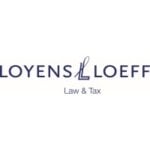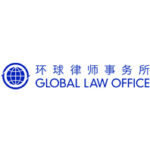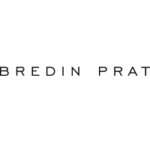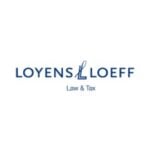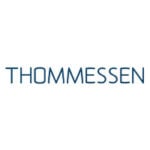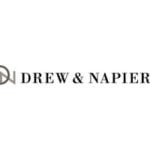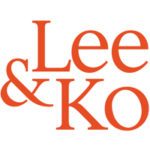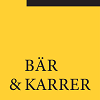-
What proportion of transactions have involved a financial sponsor as a buyer or seller in the jurisdiction over the last 24 months?
It is difficult to put a finger on the exact proportion of deals involving a financial sponsor over the past 24 months versus deals involving trade players, but it is clear that investments by alternatives’ players in Brazil have boomed within this period, in all asset classes across the alternatives’ spectrum. Growth of alternative investments in infrastructure, venture capital (VC), special situations, impact investing and private credit strategies (which has been virtually inexpressive before 2020), both in number of deals and value, has been particularly unprecedented over 2020 and 2022. Traditional growth and development investment strategies in middle-market companies have remained steadily bullish (this is particularly where there is most competition for local assets). After two remarkable years (2020 and 2021) for both private equity investments and exits in Brazil, in which the country accounted for approximately 48% of the total capital investments in Latin America in 2021 (according to data released by LAVCA), in 2024 private equity deal flow decelerated significantly, and the aggregate deal value and volume in Brazil declined in the second quarter of 2024 by 8.79% and 35.44%, respectively, compared with the same period in the preceding year, in accordance with data released by TTR Data. Nevertheless, 2022 has also been strong, although until July 2022 private equity investments grew at a significantly higher pace than venture capital investments, compared to 2020 and 2021. Based on a survey conducted by KPMG and the Brazilian Private Equity and Venture Capital Association (ABVCAP), in 1H 2022 BRL 16.5 Billion were invested in Private Equity (spurring 617% in relation to the same period of 2021), while BRL 11.6 Billion were invested in Venture Capital (which represents approx. 50% of the volume invested in the same period of 2021). Some notable investments include L Catterton’s BRL 600 Million investment in the Brazilian tech and logistics company Cantu Store and Crescera’s BRL 300 Million investment in the education company Vitru Educação. According to data released by TTR Data, in 2024 second quarter, approx. BRL 6.705,47 Million were invested in AES Brasil Energia by Auren Energia, and the largest PE transaction was an investment in Catho Online and OCCMundial of BRL 463,52 Million. Furthermore, ,Pátria Investimentos and CPP Investments represented the largest disinvestments in Brazil in 2024 second quarter.
-
What are the main differences in M&A transaction terms between acquiring a business from a trade seller and financial sponsor backed company in your jurisdiction?
The main differences rely upon the disposal process and elements related to legacy liabilities.
In terms of process, the vast majority of exits by financial sponsors is executed upon a private auction, which has proven to be the best process for maximizing value (and, therefore, returns to investors). There are firms specialized in helping financial sponsors in structuring these process (the so called M&A advisor), in addition to financial services companies that have captive M&A advisory / Investment Baking capabilities.
Regarding legacy liabilities, financial sponsors often tend to abide by very limited indemnification obligations (generally restricted to breach of fundamental warranties, such as ownership of shares, authority etc), with no recourse to any types of collateral (other than W&I Insurance, that has become increasingly popular). This is because they aim to achieve a clean break for purposes of upstreaming substantially all payable returns to investors soon after completion of an exit, especially if it is close to the end of the respective fund’s vintage.
Finally, pricing through a locked box mechanism has also become a trend over the past few years in deals where the seller is a financial sponsor, as this allows:
- transfer of the business risk from seller to buyer, considering that the price is established prior to closing, with variation only for any leakage that is not a permitted leakage; and
- predictability on amounts of returns to flow through the waterfall.
-
On an acquisition of shares, what is the process for effecting the transfer of the shares and are transfer taxes payable?
There are no transfer taxes per se, but seller may be subject to income taxes levied on potential capital gains accrued by seller corresponding to the positive difference between the respective price paid to seller in a transfer of shares and seller’s acquisition cost (which corresponds to the amount originally invested by seller in these shares). These taxes generally range from 15%-34%, depending on whether the seller is a Brazilian domiciled or foreign individual or body corporate. In addition, inflow and outflow of amounts related to private investments / exits in companies based in Brazil are subject to a .38% foreign exchange tax (Imposto sobre Operações Financeiras de Câmbio – IOF Câmbio).
-
How do financial sponsors provide comfort to sellers where the purchasing entity is a special purpose vehicle?
Financial sponsors generally provide comfort to sellers where the purchasing entity is a special purpose vehicle through equity commitment letters, especially in the context of cross-border deals. In some cases these equity commitment letters may be backed up by some type of collateral in Brazil (ie, a pledge on the target’s shares acquired by the SPV to the benefit of sell-side) or a parent guarantee given by the ultimate beneficial owners of the SPV.
-
How prevalent is the use of locked box pricing mechanisms in your jurisdiction and in what circumstances are these ordinarily seen?
Completion accounts are still more common than locked box pricing mechanisms in Brazil, considering historical buy side aversion of taking up risk before taking over a business. However, locked box has started to surface in deals involving exits by private equity players, as this ensures more predictability to sell side in terms of payment of returns to its investors. It is also fairly common in the context of deals involving businesses operated under concession, such as in the infrastructure space, where the underlying business risks can be priced based upon the terms and conditions of the respective concession agreement.
-
What are the typical methods and constructs of how risk is allocated between a buyer and seller?
There are three different types of risk allocation, namely: (a) business risk prior to completion; (b) transaction execution risk, where there is a delay between signing and closing; and (c) risks related to potential losses in connection with the business operation.
(A) Allocation of business risk prior to completion is based upon a choice for different types of pricing mechanisms. For instance, under a completion accounts mechanism sell-side retains the business risk until completion, as the acquisition price may be adjusted depending on the outcome of financials drawn up closer to the completion date, whilst under a locked box the price is set upon signing, based on financials preceding the date that parties execute the respective definitive documents.
Deferred payments structured upon earn-out arrangements are also a useful for streamlining uncertainties about how certain companies will perform in the longer term and enable buy side to test its recurrence for purposes of forecasting returns. These has become a powerful mechanism for mitigating risks to buy side, as this can be combined with other mechanisms conceived for purposes of mitigating other risks, such as for losses in respect of the business operation.
(B) Allocation of transaction execution risk is addressed upon conditions precedent to completion, including inexistence of material adverse effect or market flex provisions and potential exceptions, among other conditions. The least conditions to completion, the more certain the transaction becomes. For purposes of making material adverse effect provisions enforceable in Brazil, it is generally advisable to include tangible elements that would configure a material adverse effect.
(C) Business operation risks are allocated upon detailed representations and warranties (including a full set in respect of the business), indemnification provisions and potential collateral / guarantees (parent guarantee, hold back, compensation against amounts due as deferred payments, pledge of shares, escrow accounts, W&I insurance, among others). It is also common to negotiate terms and conditions related to limitations on obligations to indemnify, upon time limitations, and value limitations such as tipping basket, deductible, de minimis, cap, no double recovery, compensation against losses that generate tax breaks / deductions, obligation to mitigate losses etc. Breach of fundamental warranties (ownership of shares, authority etc) is generally not subject to any limitations other than limitations provided by law (e.g., statute of limitations, among others). Seller generally remains liable for any acts, facts or circumstances that give rise to a potential loss in the context of the business operations preceding the respective completion date. Given its profile and requirement of maximizing returns, financial sponsors are generally reluctant to accept being on the hook for any indemnification obligations when exiting a portfolio company, relying upon the respective founding / management shareholders awareness of the business, which is backed-up by a management warranty deed or similar back-to-back indemnification arrangements.
-
How prevalent is the use of W&I insurance in your transactions?
W&I insurance is still not usually seen in transactions governed by Brazilian law. Also, only a few local insurance companies offer such an insurance in Brazil, and the number of transactions where it was adopted is also very limited.
Typically, R&W insurance policy is purchased for operations of US$ 20 million to US$ 1 billion and its premiums are around 3% and 6% of the insured amount.
The possibility of purchasing insurance abroad by Brazilian companies and residents is restricted to certain situations, including lack of coverage of risks in Brazil, which is proven by the denial of coverage by Brazilian insurers operating in the insurance sector in which the risk falls. The regulation requires at least five formal coverage denials.
However, a foreign company is subject to foreign laws and regulations. Brazilian laws may not prohibit foreign companies from purchasing insurance in their respective jurisdictions, even if Brazilian companies are included as insured parties or beneficiaries of the insurance coverage.
To issue an R&W insurance policy, the insurer usually requires (i) analysis of due diligence report and/or the data room; (ii) analysis of the acquisition agreement; (iii) financial information, among others.
The purpose of the insurance policy is to indemnify the insured for losses resulting from any breach of the guarantees established in the agreement and expressly referred to in the insurance policy, under the terms and conditions of the insurance policy
R&W insurance policy covers unknown contingencies (tax, labor, environmental, among others), i.e., undisclosed liabilities and liabilities/contingencies not discovered during the due diligence – plus defense costs. In other words, policy covers loss resulting from the breach of the declaration in the agreement.
R&W insurance policy follows the same term of guarantee established in the agreement limited to six/seven years (in general).
The insured must forward a claim notice to the insurer, as soon as the insured becomes aware of: (i) any facts or circumstances with respect to which one can reasonably expect the emergence of a loss; (ii) a third party demand; or (iii) a loss. The claim notice shall describe the facts and circumstances related to the loss or potential loss.
Parties may agree that arbitration is the sole means for dispute resolution applicable to the disputes arising from or related to the R&W insurance policy.
Main exclusions of coverage typically include the following:
- Loss of the right to receive the insurance amount as a fraud, intentional acts, etc.;
- Known contingencies;
- Criminal fines;
- Facts related to changes made in the agreement after closing; and/or
- Any facts or circumstances that should have been disclosed to the insurer, but that were not disclosed.
To this date, deals regulated by Brazilian law still rely on more traditional types of guarantees, including pledges of shares, personal guarantees, holdback and escrow accounts.
-
How active have financial sponsors been in acquiring publicly listed companies?
Regarding investments and acquisitions of listed companies, on the one hand, straight-forward buyouts of listed companies are not as common in Brazil as they may be in other jurisdictions. However, in the few cases of public-to-private transactions, restrictive covenants such as tag-along provisions (by-laws or shareholders agreement), as well as CVM rules must apply. On the other hand, investments (i.e., not buyouts) of financial sponsors in listed companies remains high. According to B3, of the 66 companies that were listed on the stock exchange between 2009 and August 2020, 37 (56%) were portfolio companies. The year 2021 (especially its first semester) has also seen a substantial volume of exits of financial sponsors via IPOs. Except for a few remarkable exits by financial sponsors from listed companies (e.g., Patria’s partial exit from the toll road company Entrevias upon sale of a 55% stake to the French infrastructure group Vinci), 2022 has been notable for listed companies planning on strategies to raise capital from financial sponsors through the so called PIPEs (private investment into public equity), rather than pursuing buyouts per se. Regarding 2024, no IPO has been registered up to now; this is possibly related to a downturn of Brazil’s stock markets in the aftermath of the IPO spree of 2020/2021, associated with macroeconomic issues (e.g., Rising inflation, disputes between the government and the Brazilian Central Bank, municipal elections, the continuing War in Ukraine, the flood in Rio Grande do Sul, and tighter financial conditions).
-
Outside of anti-trust and heavily regulated sectors, are there any foreign investment controls or other governmental consents which are typically required to be made by financial sponsors?
The Central Bank of Brazil (“BACEN”) regulates the inflow and outflow of funds in the country. BACEN is part of the National Financial System, linked to the Ministry of Economy, which controls and records the movements and inflows of foreign capital in Brazil.
The registration of foreign capital is be made through the SCE-IED (Sistema de Prestação de Informações de Capital Estrangeiro de Investimento Estrangeiro Direto), which is part of the Central Bank Information System (Sistema de Informações do Banco Central – SISBACEN) This registration is mandatory for offshore remittances and capital repatriation.
Foreign investments to be made and registered are not subject to prior review or verification by the Central Bank. The declaratory nature of the statement implies that the Brazilian company receiving the investment and/or the representative of the foreign investor are responsible for the registration.
-
How is the risk of merger clearance normally dealt with where a financial sponsor is the acquirer?
In Brazil, a filing to the Competition Authority (CADE) is mandatory whenever the deal has effects (direct or indirect) in Brazil and the two following conditions are met:
- at least one of the economic groups involved in the deal has registered an annual gross turnover or overall volume of business in Brazil equal to or in excess of 750 million Reais (approximately USD 131 million today), in the year before the deal, and
- at least another economic group involved in the deal has registered an annual gross turnover or overall volume of business in Brazil equal to or in excess of 75 million Reais (approximately USD 13.1 million today), in the year before the deal.
For the purposes of calculating the turnovers, CADE considers as part of the same economic group:
- the companies that are subject to a common control (internal or external); and
- companies in which any of the companies under common control has, directly or indirectly, at least 20% of the voting or share capital of other companies.
For investments funds, special rules apply. In this case CADE considers as members of the same economic group: (i) the economic group of each shareholder that directly or indirectly holds a stake equal to or greater than 50% of the shares of the fund involved in the transaction through individual participation or through any type of shareholder agreement; and (ii) companies controlled by the fund involved in the transaction and companies in which the fund holds directly or indirectly a stake equal to or greater than 20% of the capital stock or voting capital.
In practical terms, as private equity transactions are usually performed by investment vehicles or funds created for the specific purpose of holding the investment to be made, such entities tend to have no turnover. Therefore, for the purpose of calculating gross turnovers and assess whether a deal must be filed before the antitrust agency, one should consider cumulatively, as part of the turnover of the group:
- the joint turnover of the quotaholders in Brazil that hold directly or indirectly 20 per cent of the quotas;
- the joint turnover of the portfolio companies in Brazil in which the equity stake held by the fund is of at least 20 per cent directly or indirectly;
- the turnover of the manager in Brazil; and
- the joint turnover of the funds under the same management in Brazil, if any.
As to the substantive assessment conducted by CADE during a merger review, the fact that the acquirer is a financial sponsor will not alter the agency’s analysis if compared to a “regular” transaction in which the acquirer is a third, non-related party. CADE will look into any horizontal and/or vertical overlaps among the Target company and the companies of the acquirer’s economic group, as per the concept of economic group involving investment funds described above.
-
Have you seen an increase in (A) the number of minority investments undertaken by financial sponsors and are they typically structured as equity investments with certain minority protections or as debt-like investments with rights to participate in the equity upside; and (B) ‘continuation fund’ transactions where a financial sponsor divests one or more portfolio companies to funds managed by the same sponsor?
Yes, in recent years there has been a rise of minority investments by financial sponsors. While the structure as the minority investments depend on the particularities of each deal and target company involved, PE funds still usually structure investments through equity. Whether by the acquisition of existing or issuance of new shares in invested companies, direct investment in equity gives the investor the right to receive dividends as well as voting rights in the invested company. The downside of investment in equity is associated with shareholders’ liability. PE funds can also focus their investments in warrants, debentures, and other securities convertible or exchangeable. Investments through debt structures are also an alternative to insulate or mitigate shareholders’ liability for obligations of the invested company, although the invested company’s financial health and ability to pay may represent risk to the investor.
Under the Brazilian Corporations Law (No. 6,404/76) all shareholders have pre-emption rights in relation to any further issues of shares of a company, to avoid dilution of equity interest. In addition, investors typically require first offer, first refusal, tag-along and drag-along rights in relation to the purchase and sale of shares. Lock-ups are also fairly common.
Continuation funds have increasingly become a trend in Brazil, especially with the IPOs downturn. It has proven to be an efficient and realistic exit alternative, with many Brazilian sponsors pursuing this strategy, as this also enables the sponsor to cherry pick those assets they believe to be the champions across their portfolio..
-
How are management incentive schemes typically structured?
Management incentive plans are a key element to any private equity transaction executed in Brazil. These incentive plans can be structured as profit-sharing, stock option or phantom stock plans, in addition to traditional earn-out arrangements where the selling founders of a business are manage the operations as C-level executives. Normal dilution under such schemes in the private equity stage would be up to 5%, while in seed/VC stage, this can be higher (10%-15%).
Different incentives schemes are chosen depending on the development stage of the company, possibility of the management to pay for the option and strike prices, as well as regulatory restrictions (for instance, fintechs tend to adopt phantom stock plans to avoid changes in the capital structure that might require reporting to the Brazilian Central Bank). These incentives can either be based upon the right to receive additional upside in a liquidity event, shares given from the outset or other types of arrangements. Types of securities taken up by management also vary. Preferred instruments (without voting rights) can be a feasible solution, such as preferred stock affording the respective beneficial owners a larger chunk of the economics (through preferred/minimum dividends), liquidation preference (which is junior to the liquidation preference given to the private equity investor), and/or redemption rights.
-
Are there any specific tax rules which commonly feature in the structuring of management's incentive schemes?
The main concern when structuring management incentive schemes in Brazil is whether the scheme will be treated as ordinary compensation for tax, labour, and social security purposes, and, therefore, impact not only the applicable taxes but also labour and severance payments. Other factor that must be taken into consideration is whether the costs incurred by the company with the incentive schemes will be deductible for tax purposes. For stock option plans, in case the option is granted for free, the fair value of the option at the time of the granting may be treated as ordinary compensation and subject to income tax and social security contribution, especially when it is granted on a habitual manner and the beneficiary is not subject to market risks. In case the beneficiary pays a fair price for the option, it should not be treated as compensation for tax and social security purposes. Additionally, any capital gains incurred by the beneficiary on the sale of the shares will be subject to income tax in Brazil, with rates ranging from 15% to 22,5%. Gains on the monthly disposal of shares equal to or inferior to BRL 20,000.00 are exempted from income tax. Dividends paid out of the shares of Brazilian companies are also exempted.
In the case of profit-sharing plans, as long as specific principles set forth under the applicable law are complied with (e.g., all employees have the right to the benefit, the benefit is based on objective criteria, among others), the amounts paid to the beneficiaries will not be subject to social security contributions and can be deducted by the company for income tax purposes.
-
Are senior managers subject to non-competes and if so what is the general duration?
Non-compete and non-solicitation provisions subject to a limited territory, scope, and term are typical restrictive provisions for managers in private equity deals, provided that such managers receive a fair consideration for such restrictions. The term of such obligations shall not surpass 5 years and the non-compete must be compensated either throughout the whole duration of the obligation or by a higher upfront amount. The individual freedom to engage in business and entrepreneurial activities is a bedrock principle of Brazilian law and the courts tend to adopt a very restrictive interpretation of this type of obligation.
-
How does a financial sponsor typically ensure it has control over material business decisions made by the portfolio company and what are the typical documents used to regulate the governance of the portfolio company?
Financial sponsors generally exercise some level of control or relevant influence in investments in Brazil, especially if the respective investment vehicle is structured as a Brazilian PE & VC fund (FIP), where there is a statutory obligation for the investor to exercise effective influence (influencia efetiva) on the portfolio companies’ decision-making process.
A private equity investor would generally require that all shareholders enter into a shareholders’ agreement that ensures the private equity investor:
- protections against value destruction (such as vetoes, negative covenants and reserved matters that require a super-majority to be approved);
- rights to appoint at least a board member, and, in some cases, an observer too;
- clear process for appointing other officers, based on goals and support by external experts for choosing professionals in the market (such as a head-hunter firm) and, in the case of higher interest ownership, the right to appoint a “c-level” officer, generally the CFO;
- information rights within pre-established seasonality and level of detail;
- requirement that the financial statements are audited by an authorised external firm;
- clear process for scrutiny of related party transactions; and
- jurisdiction of an arbitration panel for the resolution of disputes among the shareholders, among other provisions.
-
Is it common to use management pooling vehicles where there are a large number of employee shareholders?
The use of management pooling vehicles in the context of incentive schemes is not very common in Brazil and mainly used in industries that are heavily regulated such as financial services. Financial institutions and fintechs might use pooling vehicles to manage their stock option plans to facilitate the compliance with reporting obligations as well as to make it possible to use preferred stock structures in the pooling vehicles without affecting the corporate capital of the operational companies. Such structures have become more common as fintech are expanding exponentially in Brazil and reaching the capital market at record numbers in the recent years.
-
What are the most commonly used debt finance capital structures across small, medium and large financings?
Brazilian companies usually raise funds through financial and capital markets. There are a wide range of debt fundraising options, including banking loans, debt instruments, securitization, structured financing, peer-to-peer lending, credit fintechs and investment funds (which may include distressed debt, mezzanine and credit opportunities funds, focus on “later stage” investments in distressed, mezzanine, senior or subordinate debt at a large discount). Debt strategies can include the purchase of existing debt and/or making direct loans.
PE & VC funds can focus their debt investments in debentures, convertible debentures and other debt convertible securities. Investments through debt structures are also an alternative to insulate or mitigate shareholders’ liability for obligations of the invested company, although the invested company’s financial health and ability to pay may represent risk to the investor.
Leveraged PE & VC deals are rare in Brazil due to regulatory restrictions for Brazilian PE & VC funds to leverage. Brazilian PE & VC funds and their administrators are prevented from lending or borrowing, except that PE & VC funds are authorized to seek financial support, limited to an amount corresponding to 30% of the investment fund’s portfolio assets, from development organizations, such as development banks, multilateral organizations and governmental development bodies or agencies. “Development organization” is defined as an organization that is funded by a government or various governments and is controlled by that government or governments. A few examples of entities that meet these requirements (and that, in practice, are very active participants of Brazil’s PE & VC industry, predominantly in the capacity of limited partners) are the Brazilian Development Bank (Banco Nacional do Desenvolvimento Econômico e Social (BNDES), the International Finance Corporation (IFC), the Inter-American Development Bank (IDB) and Brazil’s Studies and Projects Financing Agency (Financiadora de Estudos e Projetos, FINEP).
PE & VC more sizable deals tend to require a more intensive debt element and, therefore, difficult access to debt is probably amongst one of the reasons why smaller deals account for a considerable stake of Brazil’s debt deal flow.
PE & VC funds are typically structured on investment commitments made by local pension funds, local development banks, fostering agencies, international institutional investors (such as international pension funds, sovereign funds, multilateral entities, endowments, large corporations and insurance companies, among others), family offices and funds of funds.
Alternatively, international investors often raise debt overseas within a cross-border fund structure, and bring it to Brazil as capital for investing in local portfolio companies.
-
Is financial assistance legislation applicable to debt financing arrangements? If so, how is that normally dealt with?
Yes. Brazilian law establishes a limit for interest rates that could be charged in transactions that do not involve financial institutions. Accordingly, the Brazilian Civil Code establishes that interest rates shall be limited to the “rate applicable to the late-payment of taxes owed to the National Treasury”. This limit, however, is not clear and therefore there are a lot of discussions regarding this matter. Some understand that it is of 12% per year, while others argument that it should be the Selic rate. The Brazilian Superior Court of Justice has been consistently adopting the Selic rate since 2008.
According to Provisional Measure No. 2.172-32 from 2001, the consequences of charging interest rates above the legal limit is that (i) the amount in excess may be considered null, and (ii) the creditor may be required by a court decision to return in double to the debtor the exceeding amount already paid by it, with legal interest accrued since the overpayment.
Foreign Capital Regulations
The Brazilian Federal Constitution encourages foreign investments in Brazilian companies, as long as the investment is aligned with the national interest and in accordance with Law No. 14,286/21 which regulates foreign investments in Brazil. Law No. 14,286/21 has become effective January 2023, and provides for a new legal framework on foreign exchange and international capital in Brazil.
Foreign capital means any financial and monetary resources remitted to Brazil by foreign investors, as well as any other assets entering the country without the corresponding payment, which will be framed as capital contribution of a foreign investor. Therefore, any capital remitted to Brazil by an individual or legal entity that has its domicile or headquarters offshore will be considered a foreign capital. When the remittance is of monetary resources, the investor will need to enter into a foreign exchange agreement with a Brazilian financial institution authorized to operate in the exchange market, which will execute the remittance. The next step is to register the foreign capital remitted to Brazil with the Central Bank of Brazil (BACEN).
It is important to emphasize that there is no need of prior authorization of the BACEN for the registration of capital investments, repatriation and profit remittances related to foreign capital.
Foreign Loans Regulations
Loan transactions between individuals or legal entities in Brazil and creditors domiciled offshore do not need any prior authorization of the BACEN. Brazilian regulations only require that any issuance of debt instruments offshore, foreign loans, foreign leasing transactions and export pre-payment transactions with a maturity period exceeding 360 days, must be registered in the Central Bank of Brazil’s Online Information System (SISBACEN) under the Declaratory Information System of Foreign Capital (SCE-Crédito Module).
The registration must be done before the inflow of the funds to Brazil. After disbursement, the aforementioned registration with SCE-Crédito Module needs to be updated with the schedule of payments of the loan or the debt securities in order to allow the remittance of payments of principal, interest, commissions and fees.
PE & VC Funds Regulations
PE & VC funds are regulated by the Brazilian Securities Commission (CVM). CVM Rule No. 175, of 2022, as amended (CVM Rule 175), regulates PE & VC funds in Brazil (FIP), including their formation, operation and winding up.
CVM Rule 175 regulates different categories of FIPs: Seed Capital, Emerging Companies, Infrastructure, Research, Development and Innovation (R&D and Innovation), and Multi-strategy. The table below summarizes the categories of FIPs:
FIP Category Main Characteristic Seed Capital Target companies with annual gross revenue up to R$ 20 million in the year immediately prior to the FIP’s first investment or said amount collectively in the last 3 financial years. Emerging Companies Target companies with annual gross revenue up to R$ 400 million in the year immediately prior to the FIP’s first investment or said amount collectively in the last 3 financial years. Infrastructure (FIP-IE) Target companies that develop projects in the industries of energy, transportation, water and sanitation, irrigation, and other infrastructure industries as listed by the Federal Government from time to time. R&D and Innovation (FIP-PD&I) Target companies in the field of research, development and innovation. Multi-strategy Those which does not fit in the other categories. The purpose of a FIP is to buy shares and securities convertible into shares or quotas issued by Brazilian corporations, which can either be closely-held corporations (private companies) or publicly traded corporations (listed companies). One of the most important characteristics brought by CVM Rule 175 is the possibility of investment in limited liability companies as long as they comply with the annual gross revenue requirement for invested companies by Seed Capital FIP and that the FIP effectively influences the management and the definition of their portfolio companies’ strategic drivers.
FIP must allocate and maintain at least 90 percent of its net worth in the above-mentioned assets.
Except for Seed Capital FIP and FIP-PD&I, the investment in non-convertible debentures is limited to the maximum of 33% of the FIP’s total subscribed capital.
CVM Rule 175 allows the FIP to grant advances for future capital increase (known in Brazil as “AFAC”) on their invested companies provided that (i) the FIP holds shares of the company that will receive the AFAC; (ii) the FIP is expressly allowed to make the AFAC by its by-laws; (iii) the AFAC is made as an irrevocable and irreversible commitment by the FIP; and (iv) the AFAC must be converted into capital increase in the invested company within 12 months.
The investment period of the FIP will be determined in its by-laws, which may be shortened or extended by the shareholders. Investments must also comply with the fund’s investment policy. Otherwise, the administrator or the portfolio manager may be held liable for losses suffered by the fund. FIPs are not covered by any form of deposit insurance.
In addition, the term of a FIP, as well as the possibility of early terminating a FIP, are also contemplated in the FIP’s by-laws. However, the decision to terminate early a FIP must be approved at a shareholders’ meeting.
The FIP’s shares must be targeted at qualified inverstors which are (i) the “professional investors”, (ii) individuals or legal entities with financial investments in excess of BRL 1,000,000 and that additionally attest in writing their qualified investor condition, (iii) individuals that have been approved in examinations of technical qualification or who have certifications approved by CVM as requirements for the registration of investment advisors, securities’ portfolio managers, securities analysts, in relation to their own personal savings, and (iv) investment clubs, provided that they are managed by one or more quotaholder deemed as a qualified investor. Professional investors, in turn, are (i) as financial institutions and other institutions authorized to operate by the BACEN, (ii) insurance companies and special savings companies (sociedades de capitalização), (iii) pension funds, (iv) individuals or legal entities with financial investments in excess of BRL 10,000,000 and that additionally attest in writing their professional investor condition, (v) investment funds, (vi) investment clubs which have their portfolio managed by a portfolio manager duly authorized by the CVM, (vii) autonomous investment agents, securities’ portfolio managers, analysts and securities advisors, in relation to their own funds, and (viii) non-resident investors.
The FIP’s by-laws can regulate the existence of different economic/financial rights to one or more classes of shares with respect to: (a) administration and management fees; and (b) priority order with respect to payment of earnings, amortizations, or the fund’s liquidation balance.
As a general rule, CVM Rule 175 provides that FIP must have a significant influence in the decision-making process of the target companies. Notwithstanding the above, CVM Rule 175 fails to establish an accurate meaning for “significant influence in the decision-making process”. It only provides examples on how the FIP may ensure its rights to effectively influence decisions relating to the strategic policies and management of the companies, which could be either by holding controlling shares or by entering into any shareholders agreement or any procedure that ensures their effective influence in the management of the company’s strategic policy or by appointing the members of the board of directors.
In the case of investments in closely-held corporations (unlisted corporations), the relevant by-laws must be adapted, to the extent necessary, in order to comply with the following corporate governance requirements and practices set forth in CVM Rule 175: (i) prohibition of the issuance of founders’ shares (partes beneficiárias), as well as cancellation of any existing founders’ shares; (ii) define an unified term of office of 2 years for the entire board of directors (when in exists); (iii) disclosure of (a) any agreements entered with related parties, (b) any shareholders agreements, (c) stock option programs or any issuer’s security option program; (iv) if it decides to become a publicly held corporation, it must undertake, before the fund, to adhere to a stock exchange’s or organized OTC market’s special corporate governance segment; (v) adopt arbitration as the conflict/dispute resolution mechanism; and (vi) annually audit its financial statements by an independent auditor registered with CVM.
Moreover, the FIP’s administrators must periodically provide documents and information to CVM on a three-months, semi-annual and annual basis. The most common information among the different types of investment funds are: (i) the fund’s net worth, the number of shares issued and the fund’s shareholders categories; (ii) the fund’s portfolio composition and diversification; and (iii) financial statements accompanied by the report of the independent auditors and the report of the administrator and the portfolio manager in respect of the operations and results of the fund.
The FIP’s administrators must also inform CVM and immediately disclose any material act or fact that relates to the operation of the funds or the assets comprising their portfolio by letter to all shareholders. By doing so, it will allow all shareholders or prospective investors to access information that may reasonably influence the share price, the investors’ decision to buy, sell or keep these shares or the investors’ decision to exercise any rights connected to their condition as fund’s shareholders or any securities related to the fund’s shares.
FIPs are also authorized to invest up to 33% of its subscribed capital abroad provided that the invested assets have the same economic nature of the investments allowed for FIPs in Brazil. Multi-strategy FIPs targeted exclusively at professional investors may invest up to 100% of its subscribed capital abroad provided that (i) such provision is allowed at the FIP’s bylaws; and (ii) the FIP’s bylaws determines that the Fund targets exclusively professional investors.
-
For a typical financing, is there a standard form of credit agreement used which is then negotiated and typically how material is the level of negotiation?
No. However, certain clauses are frequently used in credit agreements, such as, representations, warranties, financial and no-financial covenants, compliance, environmental, anticorruption, material adverse effect (MAE), causes of early maturity and cross default clauses. By and large, such clauses are heavily negotiated by the relevant parties.
-
What have been the key areas of negotiation between borrowers and lenders in the last two years?
The main areas of negotiations between borrowers and lenders have been ESG, AML, Anti-Corruption and financial covenants clauses.
-
Have you seen an increase or use of private equity credit funds as sources of debt capital?
No. The fast hike of interest rates across the globe (including Brasil) has lowered the appetite for debt transaction for local and foreign PE & VC funds. These funds have been more cautious on lending transactions, targeting companies with robust cash flow generation and valuable assets to be used as collateral.
Brazil: Private Equity
This country-specific Q&A provides an overview of Private Equity laws and regulations applicable in Brazil.
-
What proportion of transactions have involved a financial sponsor as a buyer or seller in the jurisdiction over the last 24 months?
-
What are the main differences in M&A transaction terms between acquiring a business from a trade seller and financial sponsor backed company in your jurisdiction?
-
On an acquisition of shares, what is the process for effecting the transfer of the shares and are transfer taxes payable?
-
How do financial sponsors provide comfort to sellers where the purchasing entity is a special purpose vehicle?
-
How prevalent is the use of locked box pricing mechanisms in your jurisdiction and in what circumstances are these ordinarily seen?
-
What are the typical methods and constructs of how risk is allocated between a buyer and seller?
-
How prevalent is the use of W&I insurance in your transactions?
-
How active have financial sponsors been in acquiring publicly listed companies?
-
Outside of anti-trust and heavily regulated sectors, are there any foreign investment controls or other governmental consents which are typically required to be made by financial sponsors?
-
How is the risk of merger clearance normally dealt with where a financial sponsor is the acquirer?
-
Have you seen an increase in (A) the number of minority investments undertaken by financial sponsors and are they typically structured as equity investments with certain minority protections or as debt-like investments with rights to participate in the equity upside; and (B) ‘continuation fund’ transactions where a financial sponsor divests one or more portfolio companies to funds managed by the same sponsor?
-
How are management incentive schemes typically structured?
-
Are there any specific tax rules which commonly feature in the structuring of management's incentive schemes?
-
Are senior managers subject to non-competes and if so what is the general duration?
-
How does a financial sponsor typically ensure it has control over material business decisions made by the portfolio company and what are the typical documents used to regulate the governance of the portfolio company?
-
Is it common to use management pooling vehicles where there are a large number of employee shareholders?
-
What are the most commonly used debt finance capital structures across small, medium and large financings?
-
Is financial assistance legislation applicable to debt financing arrangements? If so, how is that normally dealt with?
-
For a typical financing, is there a standard form of credit agreement used which is then negotiated and typically how material is the level of negotiation?
-
What have been the key areas of negotiation between borrowers and lenders in the last two years?
-
Have you seen an increase or use of private equity credit funds as sources of debt capital?


